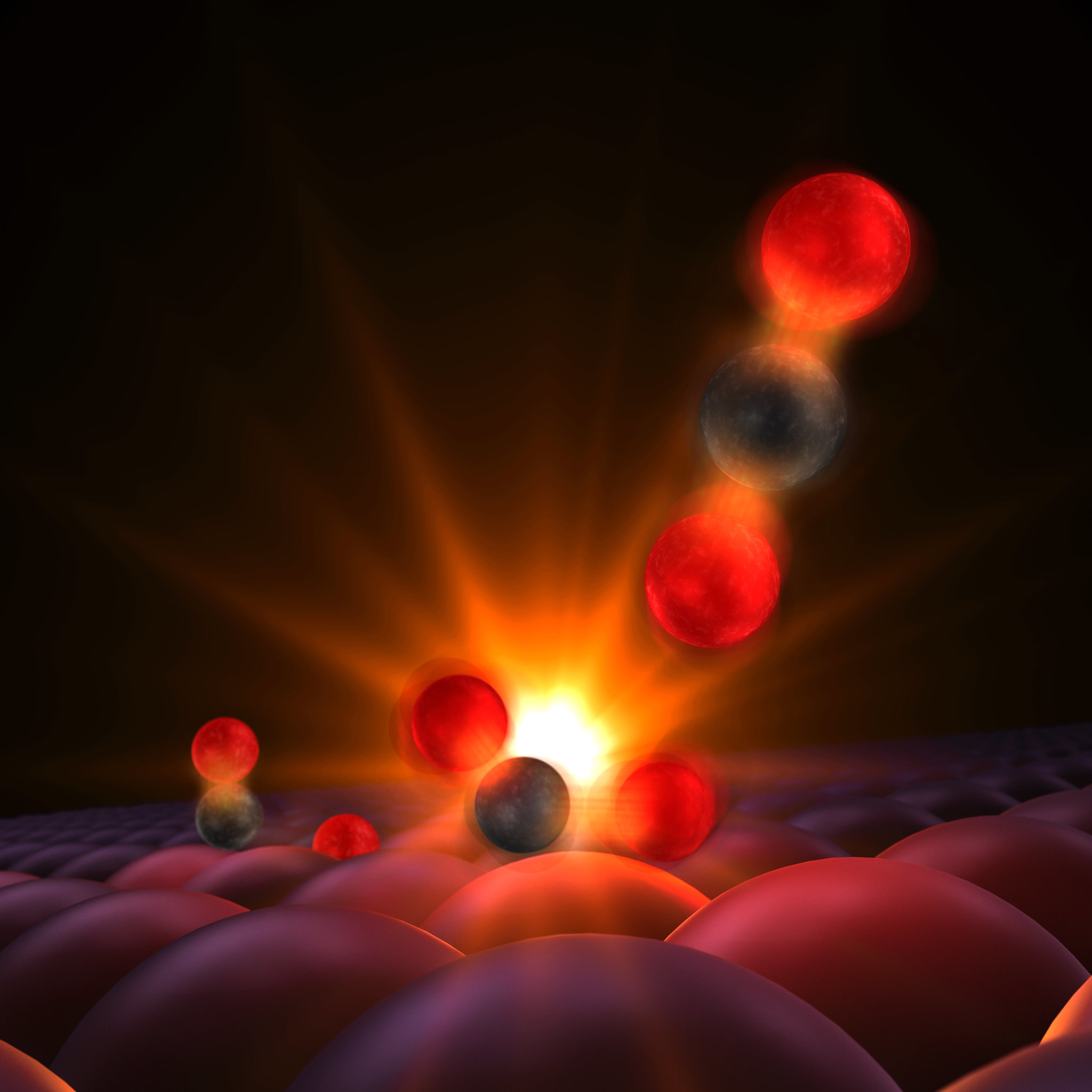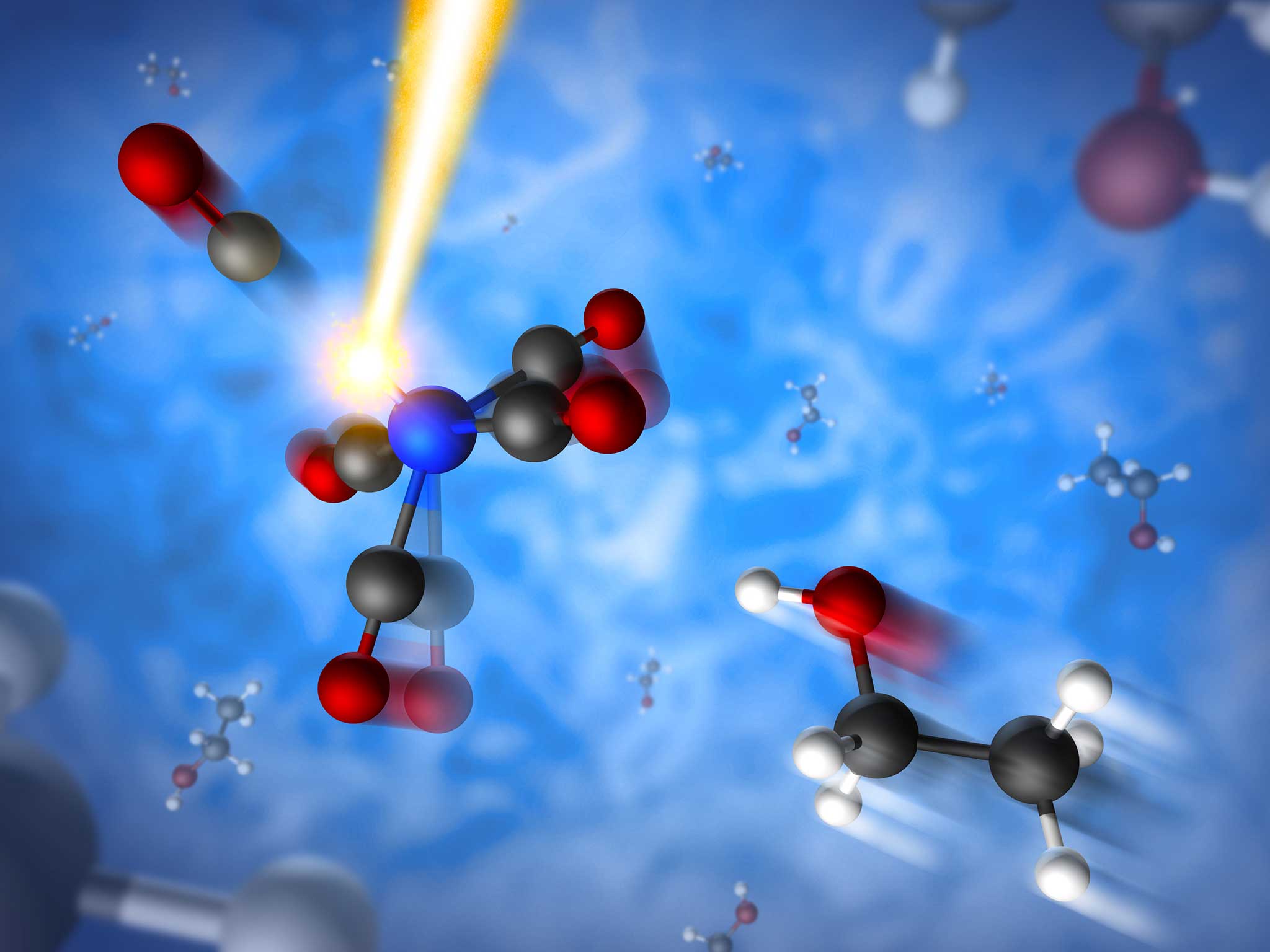Chemistry & Catalysis
Catalysis plays a vital role in the world economy and human prosperity, underpinning for example fuels production and chemical and materials synthesis. Catalysis plays a significant role in fertilizer production to support the earth’s burgeoning population, and in environmental remediation and control of pollutants – the 3-way catalytic converter in every automobile sold today being the most publically visible manifestation. Catalysis has also been the focus of six recent Nobel Prizes in Chemistry, demonstrating the centrality of catalysis to the chemical sciences.
Scientists at SLAC observe chemical reactions in unprecedented detail and find ways to make them more efficient, with the goal of using chemistry to help solve the nation’s energy challenges.
SSRL’s chemistry, catalysis and interface science program is expanding its existing specialized spectroscopy, imaging and scattering and diffraction capabilities, in close collaboration with the user community, to develop primarily molecular-level characterization techniques of catalysts under in-situ reaction conditions – whether the catalysis be molecular, thermal, electro- or bio-catalysis. Our focus will be on enabling the understanding of the fundamental underlying electronic and structural properties, and course of chemical reactions, on relevant scales of space, time and energy. This includes the development of optical pump X-ray probe methods to investigate photocatalytic reactions.
The Co-ACCESS program provides research capabilities and assistance to catalysis scientists conducting synchrotron-characterization experiments, in the framework of collaboration, to maximize the success of their research.
In the coming years, our emphasis will be on selected areas, such as photo- and electro-catalytic reactions, reactions related to producing hydrogen from solar water splitting, alcohols from the cellulose of plants, and hydrocarbons from recycled carbon dioxide, together with transformative breakthroughs in petroleum-based catalysis.
Catalysts for Efficient Energy Production
Catalysis research is evolving to an integrated, continued cycle of theoretical modeling and prediction of optimized performance, synthesis of catalyst materials, and characterization in real time.
Enzyme and Bio-Inspired Catalysts for Sustainable Energy
A key challenge in designing and developing alternative energy sources is the scarcity of suitable, inexpensive and sustainable catalytic systems based on relatively abundant, economically viable, and environmentally friendly first-row transition metals.
Geochemistry and Biogeochemistry for Subsurface and Ecosystem Science
Understanding and mitigating the environmental impacts of energy production are urgently needed in a world where natural systems are changing rapidly under the pressure of climate forces.
Partnerships & Collaborations
Consortium for Operando and Advanced Catalyst Characterization via Electronic Spectroscopy and Structure
At SSRL, we have a new initiative, funded by DOE-BES, Co-ACCESS. The aim of this program is to allow any catalysis science user group (studying heterogeneous, homogeneous or electro-catalysis) to readily apply the capabilities at SSRL into their research program, whether a one-time measurement or a component of a multifaceted research program.

SUNCAT Center for Interface Science and Catalysis
The mission of SUNCAT is to overcome challenges associated with the atomic-scale design of catalysts for chemical transformations of interest for sustainable energy conversion and storage. By combining experimental and computational methods we are developing a quantitative description of chemical processes at the solid-gas and solid-liquid interface.

Contacts & Resources
Science Highlights
Curated list goes here
